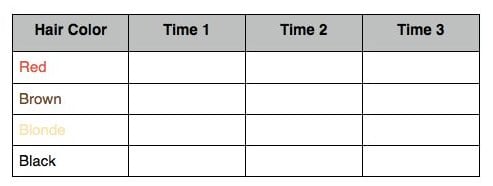Science project
How Does Glacier Movement Affect Earth?
Grade Level: Elementary Type: Earth Science
Objective
To model what happens to the Earth’s surface when ice moves over land.
Research Questions:
- How is glacial ice formed?
- How do glaciers move?
- What happens to the Earth’s surface when a glacier moves?
Glaciers are massive bodies of ice that move across the surface of the Earth like rivers. As glaciers move they change the surface of the Earth by wearing away loose rocks and soil and depositing them somewhere else.
Materials:
- Cornstarch
- Waxed paper
- Spoon
- Graduated cylinder
- Water
- Large bowl
- Gravel
- Sand
- Soil
Experimental Procedure:
- Mix 1 ½ cups of water and a 1 pound box of cornstarch in a large bowl. Mix to where very little water is left standing on the surface.
- Place a golf-ball-sized spoonful of the mixture in the center of a piece of waxed paper.
- Observe how the material behaves. Does it flow? This is much like the way ice deep in a glacier flows.
- Draw a diagram of what your glacier model looks like.
- On top of the glacier, place another spoonful of the mixture in the center. This is “new snow” over the ice cap during the winter. What do you observe about the perimeter of the glacier?
- Sprinkle sand, gravel, and soil in a 1 ½ inch band around the edges of the glacier. Use a marker to mark the perimeter of the band on the waxed paper.
- Sprinkle a little soil on top of the glacier. This represents loose rocks and soil from the Earth’s surface.
- Place one spoonful of the mixture at a time on top of the center of the glacier. After each spoonful, measure how far the ice cap moved. Observe what happens when the glacier reaches the sand. Stop adding “new snow” when the glacier is 1 ½ from the paper’s edge.
- Draw a diagram of your glacier. Compare the thickness at its edges and center.
- Place a second piece of waxed paper on top of the glacier. Carefully turn it over so you can see the bottom of the glacier. Observe and draw a diagram of the bottom. What do you notice about the position of the sand and soil particles?
Terms/Concepts: Weathering; Glacial movement; Continental glaciers; Valley glaciers; Moraines; Erratics
References:
Disclaimer and Safety Precautions
Education.com provides the Science Fair Project Ideas for informational purposes only. Education.com does not make any guarantee or representation regarding the Science Fair Project Ideas and is not responsible or liable for any loss or damage, directly or indirectly, caused by your use of such information. By accessing the Science Fair Project Ideas, you waive and renounce any claims against Education.com that arise thereof. In addition, your access to Education.com's website and Science Fair Project Ideas is covered by Education.com's Privacy Policy and site Terms of Use, which include limitations on Education.com's liability.
Warning is hereby given that not all Project Ideas are appropriate for all individuals or in all circumstances. Implementation of any Science Project Idea should be undertaken only in appropriate settings and with appropriate parental or other supervision. Reading and following the safety precautions of all materials used in a project is the sole responsibility of each individual. For further information, consult your state's handbook of Science Safety.
Education.com provides the Science Fair Project Ideas for informational purposes only. Education.com does not make any guarantee or representation regarding the Science Fair Project Ideas and is not responsible or liable for any loss or damage, directly or indirectly, caused by your use of such information. By accessing the Science Fair Project Ideas, you waive and renounce any claims against Education.com that arise thereof. In addition, your access to Education.com's website and Science Fair Project Ideas is covered by Education.com's Privacy Policy and site Terms of Use, which include limitations on Education.com's liability.
Warning is hereby given that not all Project Ideas are appropriate for all individuals or in all circumstances. Implementation of any Science Project Idea should be undertaken only in appropriate settings and with appropriate parental or other supervision. Reading and following the safety precautions of all materials used in a project is the sole responsibility of each individual. For further information, consult your state's handbook of Science Safety.













